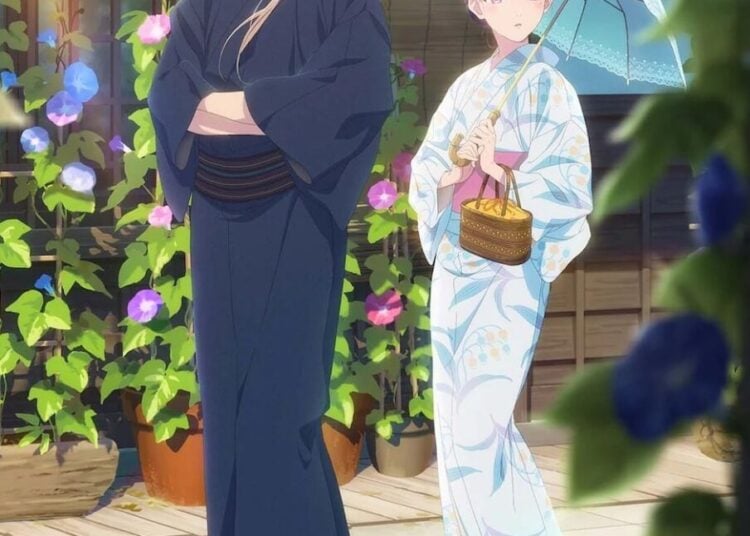Japan is famous for its cooperative group culture, and you can see this in many places, from clubs in schools to doujinshi circles to more formal organizations. In the past few years I’ve noticed that many anime series have been made by groups rather than individual creators or companies, for example the Ikki Tousen Committee, the Claymore Production Committee, and the School Days Production Committee. These groups are generally made up of a variety of members working on the project, including producers, artists, representatives from companies like Bandai, and quite often, major anime retailers like Toranoana or Animate, who can give input that will help make the project successful with fans. One reason these committees come into being is financial — having a group of experienced individuals be responsible for a project and makes it easier to raise funds — but it also spreads responsibility around to more members. When Steamboy, the most expensive anime film ever made, failed to make back even half of its $26 million price tag, I’m sure Akira creator Katsuhiro Otomo was glad to have had the Steamboy Promotion Committee to take some of the blame off him.
Each language is unique, and presents special challenges to learners coming in from other language groups. For example, Chinese or Thai are tonal languages, Romance languages have noun gender to keep track of, and so on. According to the J-List staff, the most difficult areas of learning English are the “helping verbs” that fly around English sentences (“she shouldn’t have been able to drive, should she have?”), or knowing whether to answer a statement with a tag question on the end in the positive or negative (“You’re Japanese, aren’t you?”). The Japanese language also has some rough patches, beyond the obvious challenge of mastering kanji, which include getting used to grammatical particles that “mark” the parts of sentences, including the often-confusing “topic marker” (wa) and “subject marker” (ga) of a sentence; getting used to verbs coming in formal and informal forms; and (as a male) learning not to imitate female speakers too much, since you can easily find yourself speaking effeminately. Happily, Japanese is not an especially difficult language to pronounce, once you train the muscles in your mouth to say the five vowels, which are “a” (ah), “i” (ee), “u” (oo), “e” (eh) and “o” (oh). These sounds are so tightly formed compared to the “lazy” sounds of American English, though, that I’ve actually experienced muscle pain in my mouth from speaking too much Japanese.
There are certain mysteries associated with living in Japan, as any gaijin will tell you. Why does your boss say so desu ne (“Yes, that’s so”) right before shooting your idea down? Why are some trains called nobori (climbing) trains and others kudari (descending) trains? (Trains headed in the direction of Tokyo are the former, and away from the capital, the latter.) Why do stores suddenly start playing Auld Lang Syne from speakers fifteen minutes before closing? (To politely let you know you should complete your purchase and leave.) Then there’s the great mystery of the kanji characters for “small” and “big” (sho and dai) which you see on most toilet flush handles. Although Japan is generally wasteful when it comes to its natural resources, often covering the sides of mountains with concrete just in case there might be a rock slide someday, it has a green side too, taxing less efficient car engines at a higher rate, selling refill versions of products to cut down on trash volume and promoting low-energy lighting. Japanese toilets are set up to conserve resources, too: you can turn the handle to the right to perform a normal flush (“big”), or hold it to the left for a few seconds to just let out a little bit of water (“small”). It took me a few years to make the connection, but of course the “small” character stands for shoben (meaning number 1, literally translated as “small convenience”), while the other turn of the handle stands for daiben (number 2, or “big convenience”). One more mystery solved.
As you probably know, J-List sells a wide range of delicious Japanese snacks, with the newest releases from companies like Glico, Meiji, Morinaga and more always on the site. Although our Japanese snacks are fun to much on any time, they can also make great gifts for the upcoming holidays, and what’s why we’ve added a new Best Snacks Stocking Stuffer set, featuring a selection of the best snacks we carry, from Meltykiss to Kit Kat to Pocky to Meltykiss and that delicious Charcoal Roasted Coffee Candy.















